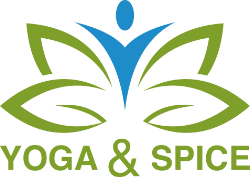Since I have been teaching the powerful practice that is Kundalini Yoga I am often asked to explain more about Mantra and chanting and why it feels so good.
‘Man’ = mind
‘Tra’ =Tool.
A mantra is a tool for the mind.
It is also a vibration. There is a rhythm in the universe and we are part of that. The practice of yoga can be seen as a way to shut out the constant chatter of the mind and access this rhythm, which brings with it peace and contentment.
Ancient traditions have always seen song as sacred, and certain sounds particularly so.
The most commonly heard mantras used in yoga are syllables, words or phrases from sacred languages (like Sanskrit in traditional yoga and Gomurkhi ,often used in Kundalini yoga).
Mantra helps us consciously experience our own emotional world and natural rhythm, strengthening our inner balance and even elevating it. Chanting calls on positive energy and changes our vibration. When our vibration changes so does our influence on others.
On a day to day level, Mantra helps activate the parasympathetic nervous system taking us out of the fight and flight state which is increasingly our norm, and into ‘rest and digest’. Chanting helps stimulate the vagus nerve as does the rhythmic pattern of the breath. Using mantra can change the chemistry of the brain.
How to chant
Mantras are powerful both when chanted out loud, whispered, or repeated internally. They work on the three levels of consciousness. Once a rhythm is achieved, the practitioner can surrender to the sound. So instead of trying to silence the mind, we open a conversation between mind and soul.
The power of mantras are in the actual sound, the meaning, the sound itself, rhythm and the tone. The shape made by the mouth and the reflexology of the tongue on the palate can also have a powerful effect.
Sacred sounds are universal and already inside each one of us. We just have to open up to them.
The ultimate goal of chanting is to achieve the Anahat – or unstuck sound or vibration which is in our hearts. This is when the nervous system vibrates without effort, becomes attuned to the infinite and experiences the realm beyond sound.
Another way of looking at this is that Mantras work with our Throat Chakra from where we speak our truth. The Throat is Chakra is closely connected to, and expressed the Heart Chakra, where we know our truth. It all comes back to becoming the best version of ourselves. Living in and from our Hearts.
Some mantras you will come across in our practice
OM or the Kundalini (Gomurkhi) version ONG
The one infinite creative energy. It is the primal vibration and should be chanted with the tongue hitting the upper palate of the mouth. This activates the pituitary gland and energises the brain,
Sat Naam – true identity
Sat Naam awakens the soul and gives you your destiny. Nam means to call upon, name or identify with. Sat Nam means Truth is my identity and I call upon the eternal Truth that resides in all of us.
Sat Naam is pronounced Sut Nom. Usually the Sat is to a count of seven and the Naam is to the count of one.
Sa Ta Na Ma
The individual syllables of sa ta na ma are letters in the Sanskrit alphabet and are also the linguistic root of Sat naam,”
The individual syllables are attributed as:
Sa — birth, beginning and the totality of the cosmos
Ta — life, existence and creativity
Na — death and transformation
Ma — rebirth, regeneration and consciously experiencing the joy of the Infinite
The “a” is pronounced like the “u” in up and only held for one beat.
The “Ta” and the “Na” are pronounced with the tip of the tongue touching the teeth. Changing the placement of the tongue changes not only the meaning, but also the vibratory quality.
Har – creative infinity
A mantra for prosperity. Develops will power.
Har should be chanted from the navel. The pumping of the navel accesses our source power. Then flick the tongue behind the teeth. The sound is actually more like HUD
Can I make up why own Mantra?
Modern day thought is that we CAN. Any positive belief/statement can connect to the power of the mind and help promote physical and mental health. And good old-fashioned singing from all traditions has a tremendous feel good factor. Our own language has a heritage and words that are rich in meaning. Constant repetition of words meaningful to us can bring positivity into our life.
Here’s a few to try:
“I create my own path and walk it with joy.”
“I will have a good day, because it’s my choice.”
“I listen to my body and give it what it needs.”
“I surrender to the flow and have faith in the ultimate good.”
Or share yours with us
